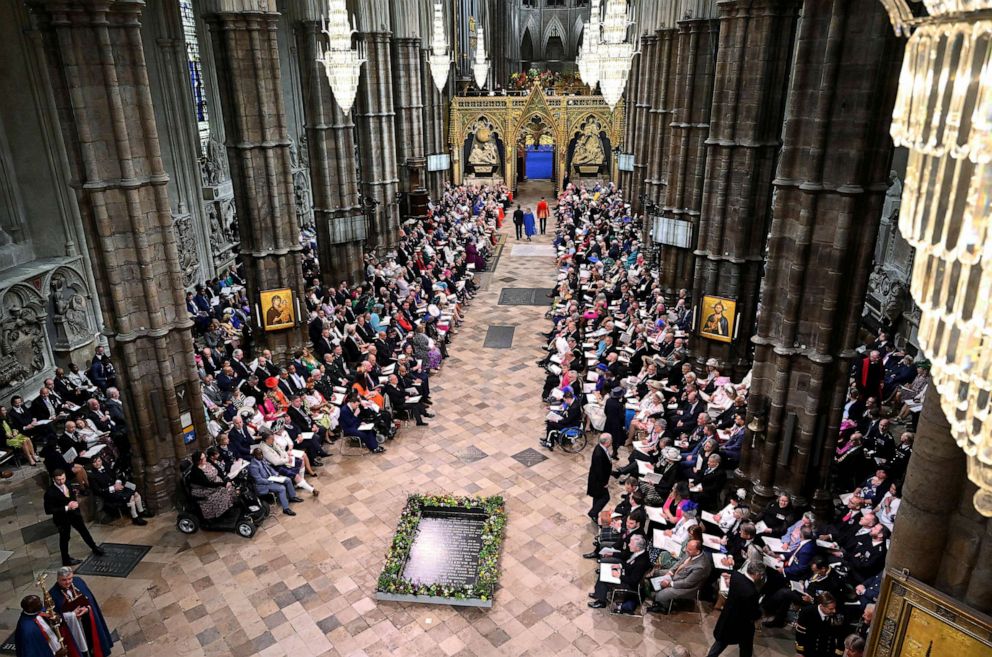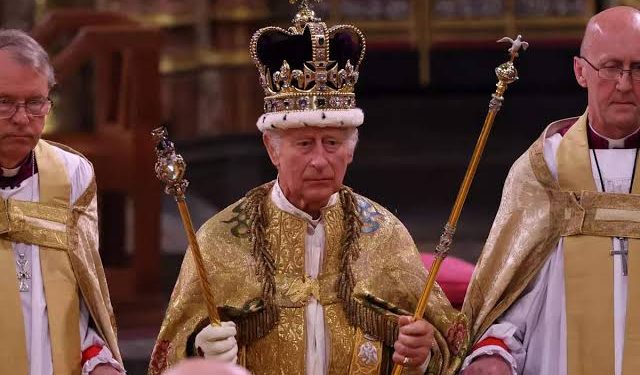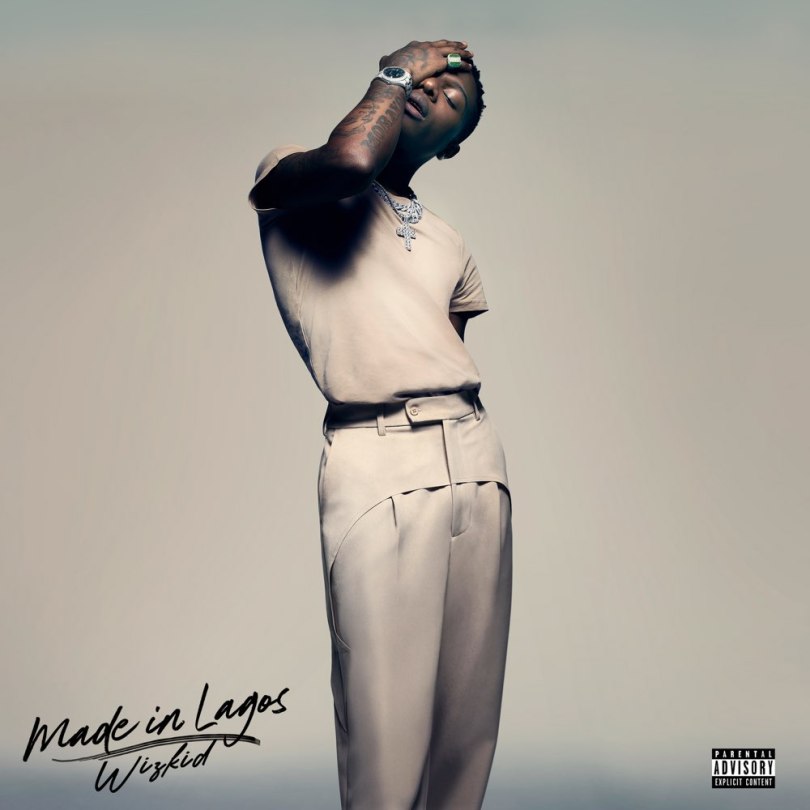King Charles finally crowned as heir to his late mother Queen Elizabeth II, as he was officially crowned king in the first coronation in Britain since 1953.
At 12:02 pm, the Archbishop of Canterbury Justin Welby placed the solid gold St Edward’s Crown on Charles’s head as a sacred and ancient symbol of the monarch’s authority.
Cries of “God Save the King” rang out from the 2,300-strong congregation at Westminster Abbey and trumpet fanfares sounded at the climax of the solemn religious confirmation of his accession.
Charles
Outside, ceremonial gun salutes blasted out across land and sea; while bells pealed in celebration at churches across the country.
The build-up to the Christian ceremony of prayer and praise — steeped; in 1,000 years of British history and tradition, with sumptuous robes and priceless regalia — has been; mostly celebratory.
But even before Charles, 74, and Queen Camilla, 75, left Buckingham Palace for a rainy procession to the abbey, police arrested dozens of protesters using new powers; rushed onto the statute book to crack down on direct action groups.

The anti-monarchy movement Republic — which wants an elected head of state — said six of its organizers were; detained, while climate activists Just Stop Oil said 19 of its number were; held.
Nevertheless, dozens of Republic activists held aloft banners on the route of the procession route, declaring: “Not My King.”
Both Human Rights Watch and Amnesty International voiced concern at the arrests. “This is; something you would expect to see in Moscow, not London,” HRW said.
London’s Metropolitan Police has some 11,500 officers on the streets in one of its biggest-ever security operations. It has warned that it has; an “extremely low threshold” for protests.
As well as being the first coronation in 70 years, it was the first of a king since 1937. It was; only the second to be televised and the first in color and streamed online.

Pledge
Much of the two-hour Anglican service, in which Charles pledged “I come not to be served but to serve”, would have been; recognizable to the 39 other monarchs crowned at Westminster Abbey since 1066.
But while many of the intricate rituals and ceremonies; to recognize Charles as his people’s “undoubted king” remained, the king sought to bring other aspects of the service up to date.

Women bishops participated for the first time, as did leaders of Britain’s non-Christian faiths while its Celtic languages — Welsh, Scottish Gaelic, and Irish Gaelic — featured prominently.










